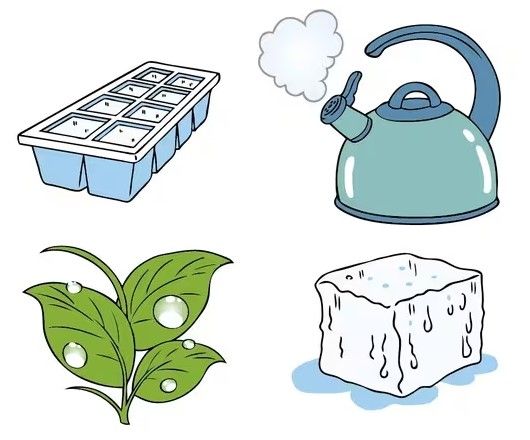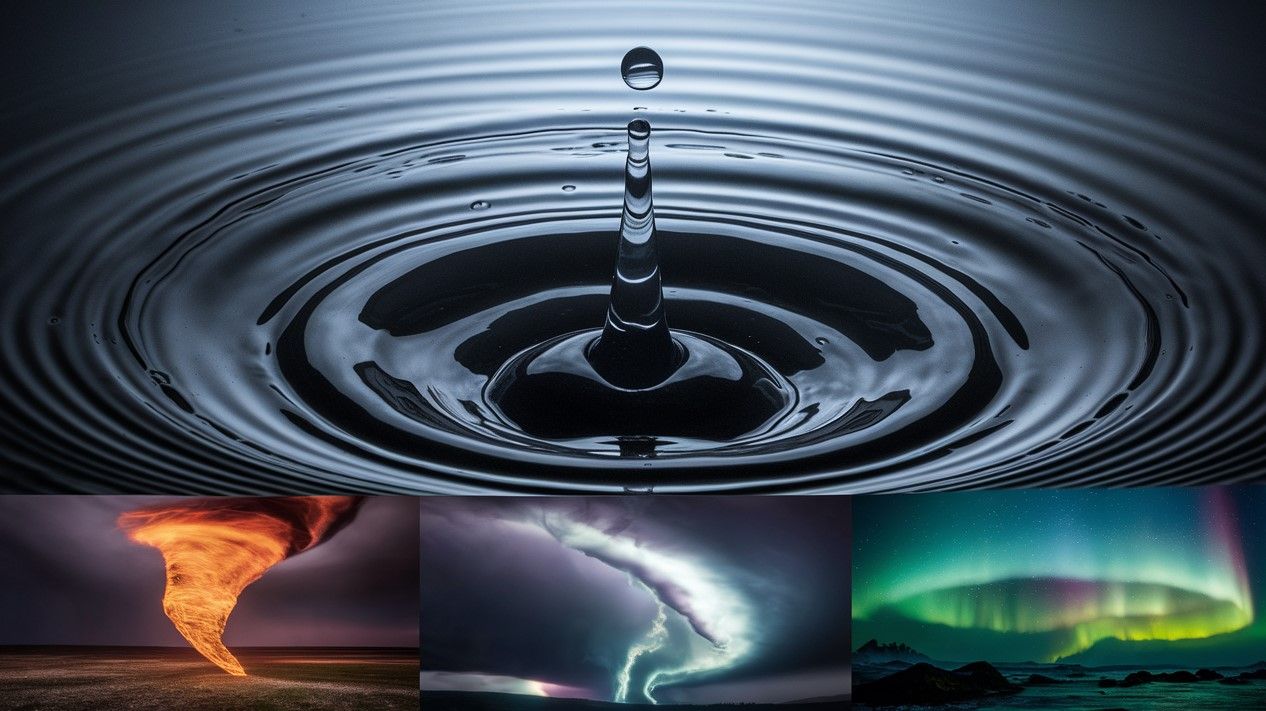Physical changes and Examples

Contents
The world around us is in a constant state of flux. From water freezing on a cold winter’s day to a log burning in a fireplace, changes in matter are happening all the time. But not all changes are created equal. Scientists categorize these transformations into two main types: physical changes and chemical changes. This article will focus on physical changes, providing numerous examples to help you understand what they are, how to identify them, and how they differ from a chemical change where a new substance is formed. Understanding these fundamental concepts is key to grasping the basic properties of matter itself.
I. Introduction: What is a Physical Change in Matter?
Defining Physical Change: Altering Form, Not Identity
So, what exactly is a physical change? A physical change is a type of change in which the form of matter is altered but one substance is not transformed into another. The size or shape of matter may be changed, but no chemical reaction occurs. This means the chemical composition or identity of the substance remains the same. In simpler terms, the matter may look different – it might change its state (like from a solid to a liquid), its shape, or its size – but the actual molecules that make up the substance remain untouched. No new chemical species are created during a physical change. The original material is still present, just in a different configuration or state.
These changes often involve shifts in energy, such as the addition or removal of heat, which can cause changes in the state of matter. For example, adding heat to ice (solid water) causes it to melt into liquid water. Though its form has changed from a solid cube to a liquid puddle, it’s still H₂O molecules. The chemical bonds within the water molecules haven’t broken.
It’s crucial to distinguish this from a chemical change. A chemical change, also known as a chemical reaction, results in the formation of one or more new substances with entirely different chemical properties and compositions from the original substances. We’ll delve deeper into this distinction later.
II. Key Characteristics that Identify a Physical Change
To confidently identify a physical change, look for these tell-tale characteristics. Understanding these helps differentiate them from a chemical transformation.
Identifying the Properties of a Physical Change
A. No New Substance is Formed:
This is the absolute cornerstone of a physical change. The chemical identity of the substance does not alter. The individual atoms within the molecules are not rearranged to form new types of molecules. While the arrangement or energy of the molecules themselves might change (e.g., they move faster or spread further apart, as in a phase change), the molecules themselves remain intact. The fundamental chemical properties of the substance remain the same. If you start with water (H₂O) and it undergoes a physical change, you still end up with H₂O.
B. Often Reversible:
Many, though not all, physical changes are reversible. This means the original material can often be recovered through physical means. A classic example is water: ice (solid water) can melt into liquid water when heat is applied. If you then lower the temperature, that liquid water can be frozen back into ice. This reversibility is a strong indicator of a physical change. However, some physical changes, like crushing a can or shredding paper, are practically irreversible in terms of restoring the exact original form, even though the aluminum of the can or the cellulose of the paper hasn’t changed chemically. You still have aluminum and paper, just in smaller or different shapes.
C. Changes in State or Form:
Physical changes are commonly observed as a change of state (also called a phase change). This refers to the transition of matter between solid, liquid, and gas phases. These transitions are driven by changes in temperature and/or pressure. Another common manifestation is a change in physical shape or size. For example, if you take a piece of wood and chop it into smaller pieces, you’ve changed its shape and size, but it’s still chemically wood. This type of change occurs without altering the fundamental substance involved. The ability of a liquid to flow and take the shape of its container, or a gas to expand to fill its container, are also related to their physical states.
III. Common Examples of Physical Changes
The best way to understand physical changes is to look at concrete examples. These everyday occurrences, many of which are illustrated in the “Physical Changes” graphic (crushing a can, melting an ice cube, boiling water, mixing sand with water, breaking glass, dissolving sugar in water, shredding paper, chopping wood), represent clear instances of physical transformations.
Everyday Examples of Physical Changes We Observe
A. Changes of State (Phase Changes):
These are perhaps the most common and easily recognizable examples of physical changes:
- Melting: The transition from a solid to a liquid due to an increase in temperature. A familiar example is an ice cube melting into liquid water. Similarly, metal will melt when sufficient heat is applied, changing from a solid to a liquid without altering its elemental composition. Butter melting in a pan is another.
- Freezing: The opposite of melting; a liquid turns into a solid as temperature decreases. Liquid water freezing into ice is a prime example. This is a direct liquid-to-solid transformation.
- Boiling/Evaporation: The transition from a liquid to a gas. When water is heated to its boiling point (100°C or 212°F at standard pressure), it turns into steam (water vapor). This is an example of boiling water. Evaporation is a similar process where liquid turns to gas at the surface, often below the boiling point, like a puddle drying up after rain or vaporizing liquid nitrogen.
- Condensation: The transition from a gas to a liquid, typically occurring when a gas cools. You see this when steam from a hot shower fogs up a cool mirror, or when dew forms on grass overnight as water vapor in the air cools.
- Sublimation: The direct transition from a solid to a gas, bypassing the liquid phase. Dry ice (solid carbon dioxide) turning directly into carbon dioxide gas at room temperature is a classic example. Frost disappearing from a window on a cold, dry morning without melting first is another.
- Deposition: The direct transition from a gas to a solid, bypassing the liquid phase. The formation of frost from water vapor on a cold surface is an example of deposition.
B. Changes in Shape or Form:
These changes alter the physical appearance without changing the substance:
- Cutting/Tearing/Breaking/Shredding: Cutting or chopping wood, tearing cloth, shredding paper, or breaking glass are all physical changes. The material itself doesn’t change chemically; you just have smaller or differently shaped pieces of the same original material. A log cut into several pieces is still wood.
- Bending: Bending a piece of metal, like a paperclip, changes its shape but not its metallic properties. It’s still metal.
- Crushing/Grinding: Crushing an aluminum can or grinding coffee beans or salt crystals into a powder are physical changes. The substance doesn’t change chemically; its particles are just made smaller.
- Chopping an apple: While exposure to air can cause browning (a chemical change), the initial act of chopping is purely physical.
C. Dissolving:
This is an example of a physical change that sometimes confuses people. When you dissolve sugar in water or salt in water, it seems to disappear. However, the sugar (sucrose) or salt (sodium chloride) molecules simply spread out and intermingle among the water molecules, forming a solution. The substance itself hasn’t changed its chemical identity. If you evaporate the water, you can recover the solid salt or sugar. This physical change is a change in mixture and dispersion, not chemical composition.
D. Mixing (without reaction):
When you mix substances that don’t react chemically, it’s a physical change. Each substance retains its original properties and identity.
- Mixing sand with water: The sand and water can be separated again (e.g., by filtration or evaporation).
- Mixing red and green marbles: The marbles are unchanged and can be sorted.
- Filling a candy bowl with different candies: Each candy remains itself.
- Mixing flour, salt, and sugar (dry): Before any liquid is added to initiate a chemical reaction (like in baking), the dry mixing is a physical change.
- Mixing water and oil: While they don’t dissolve in each other (they are immiscible), creating an emulsion or simply having layers is a physical mixture. They can be separated.
- Mixing salt and sand: A simple mixture where both components retain their properties.
E. Special Case: Melting Sulfur
Melting solid sulfur into liquid sulfur is an interesting example. This state change does cause a noticeable color change (from yellow solid to reddish liquid at higher temperatures), even though the chemical composition (elemental sulfur, S) is the same before and after the change. Several nonmetals, such as oxygen (pale blue liquid to colorless gas) and radon, also change color as they change phase. This highlights that while unexpected color changes often indicate a chemical change, it’s not an absolute rule, especially during phase transitions of certain elements. The key is that no new chemical substance is formed.
IV. Distinguishing Physical Change from Chemical Change
Understanding the difference between a physical change and a chemical change is fundamental in science, particularly in chemistry.
Physical Change vs. Chemical Change: A Clear Distinction
To recap, a physical change alters the appearance or state of matter but not its chemical identity. In contrast, a chemical change (or chemical reaction) results in the formation of an entirely new substance or substances with different chemical properties. The original substance is transformed into something else.
Chemical changes involve the breaking of existing chemical bonds and the formation of new chemical bonds between atoms, leading to a rearrangement of atoms to form new molecules or compounds.
Here are some common indicators that a chemical change (and thus a chemical reaction) has occurred, rather than just a physical change:
- Production of a gas (bubbles): If you see bubbles forming and it’s not due to boiling (which is a physical change like boiling water), a new gas might be produced. For example, mixing baking soda and vinegar produces carbon dioxide gas.
- Formation of a precipitate: If two clear solutions are mixed and a new, insoluble solid substance forms and settles out, that’s a precipitate. This indicates a chemical change where a new compound has formed.
- Change in color (unexpected): While mixing paints is a physical change (the pigments are just intermingled), an unexpected and often irreversible color change frequently signals a chemical reaction. For example, when iron rusts, it changes from a grayish shiny metal to a reddish-brown flaky substance (iron oxide). The change in color when melting sulfur is an exception, as it’s still elemental sulfur.
- Production or absorption of light or heat (energy change): Many chemical reactions release energy in the form of light or heat (exothermic), or absorb energy (endothermic). The burning of wood in a fire is a prime example of an exothermic chemical change. The wood reacts with oxygen, producing ash, smoke, carbon dioxide gas, and water vapor, along with significant heat and light. A cold pack becoming cold when activated is an endothermic chemical reaction.
- Change in odor: The production of a new smell often indicates that a new chemical substance has been created (e.g., rotting food).
- Formation of a new chemical species: This is the best and surest indicator. The end product has a different chemical identity and different chemical properties (like flammability, acidity, reactivity) than the starting materials.
Let’s illustrate these differences in a table for clarity:
| Feature | Physical Change | Chemical Change |
|---|---|---|
| New Substance? | No, chemical identity is preserved. | Yes, new substance(s) with new properties are formed. |
| Reversible? | Often easily reversible (e.g., melting ice). | Usually not easily reversible, or not at all (e.g., burning wood). |
| Chemical Composition | Unchanged; original material remains. | New chemical composition; original material is transformed. |
| Chemical Bonds | Bonds within molecules are not broken or formed. | Existing bonds break, and new bonds form. |
| Energy Change | Typically smaller, often related to phase changes. | Can be significant (heat/light produced or absorbed). |
| Atom Rearrangement | No rearrangement of atoms into new molecules. | Atoms rearrange to form new molecules/compounds. |
| Indicators | Change in state, shape, size, mixing. | Gas, precipitate, color change, odor, heat/light. |
V. Why Understanding Changes in Matter is Important
The Significance of Recognizing Different Changes in Matter
Recognizing different changes in matter isn’t just an academic exercise; it has practical importance in many areas of life and science.
- Real-world Applications: From cooking (boiling water for pasta is a physical change, while the Maillard reaction that browns meat is chemical) to industrial processes (shaping metal by bending is physical, while smelting ore to extract metal involves chemical changes), understanding these distinctions is vital. Environmental phenomena, like ice caps melting (physical change) versus the formation of acid rain (chemical change through reactions in the atmosphere), also highlight this.
- Foundation for Chemistry: A solid grasp of physical changes and how they differ from chemical changes and chemical reactions is a cornerstone for understanding more complex chemical concepts. It helps in predicting how substances will behave under different conditions, such as changes in temperature or when mixed with other substances.
- Observing and Interpreting the World: It allows us to better interpret everyday phenomena. We can understand why water changes state as temperature fluctuates, or why a log turns to ash and smoke when it burns (a new substance is formed), but a piece of paper torn into pieces is still fundamentally paper. This enhanced understanding enriches our perception of the material world.
- Safety: Knowing the difference can be crucial for safety. For instance, understanding that mixing certain household chemicals can lead to dangerous chemical reactions (producing toxic gases) rather than just a physical mixture is vital.
VI. Conclusion: Summing Up Physical Changes
In essence, a physical change is an alteration to the form, shape, or state of a substance, but crucially, not its chemical identity. The original substance remains, even if it looks different. Key examples of physical changes are abundant and include melting ice, dissolving sugar in water, cutting wood, crushing a can, or water boiling into steam. These are distinct from chemical changes, where a chemical reaction occurs, and an entirely new substance with different properties is formed.
The next time you observe matter undergoing alterations – like an ice cube in your drink slowly disappearing, sugar dissolving in your coffee, or water boiling on the stove – you’ll have a deeper appreciation for the processes at play. The key takeaway, as you assess any change, is to ask: “Has a new material or substance been formed?” If the answer is no, and the original substance is still present (even if in a different state or form), you’re most likely observing a physical change.











